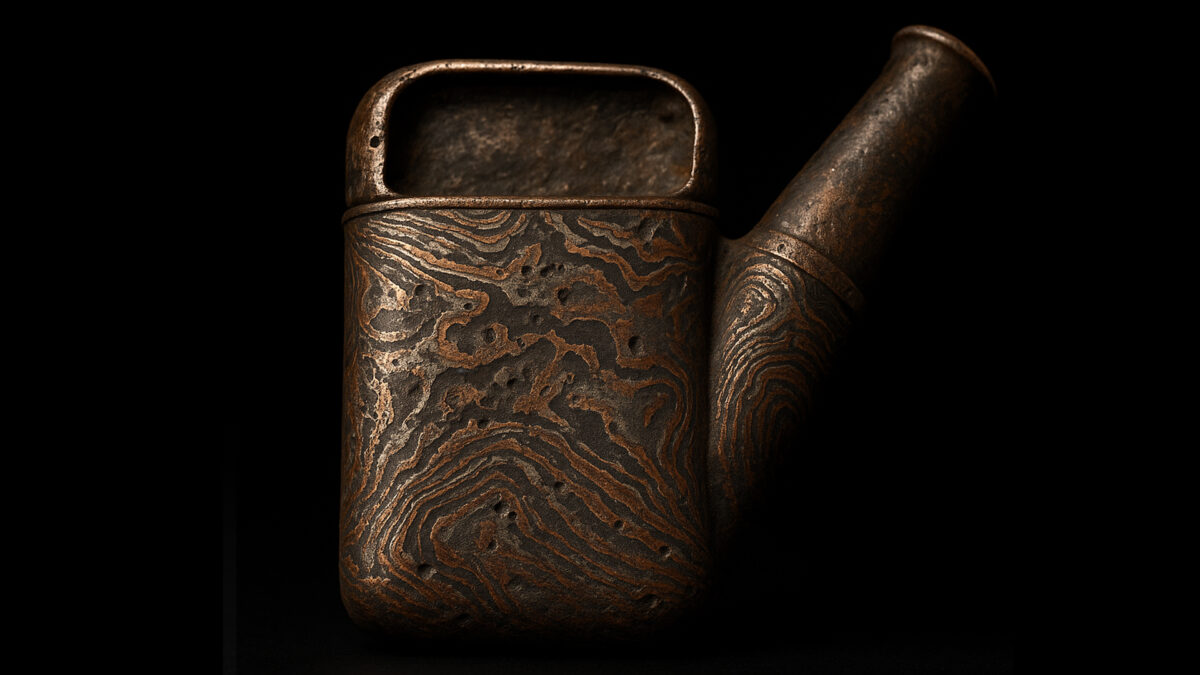- The Global Recognition of Japan’s Traditional Mokume Gane: A Cultural and Historical Overview
- 1. Initial Global Exposure via World Expositions (Late 19th Century)
- 2. Export of Sword Fittings as Collectible Artworks
- 3. Fusion with Contemporary Jewelry Arts (Late 20th Century – Present)
- 4. Terminology and Language Integration
- 5. Modern Branding in the Wedding and Luxury Craft Markets
- Summary: Stages of International Recognition
- References
The Global Recognition of Japan’s Traditional Mokume Gane: A Cultural and Historical Overview
Mokume Gane—Japan’s traditional woodgrain-patterned metalwork—has gradually gained recognition overseas through a combination of historical, cultural, and marketing factors. Here is a breakdown of the key stages and influences behind its international spread.
1. Initial Global Exposure via World Expositions (Late 19th Century)
During the late Edo and early Meiji periods, Japan opened its doors to the world through international expositions. Among the crafts introduced were kinko metalworks, which included Mokume Gane-decorated sword fittings (such as tsuba and kozuka), tobacco cases, and inrō.
Notable examples:
- 1867 Exposition Universelle (Paris)
- 1873 Vienna World Expo
- 1876 Centennial Exposition (Philadelphia)
Through these exhibitions, Western artisans and art historians began to pay attention to Japanese metalworking techniques.
2. Export of Sword Fittings as Collectible Artworks
Following the Meiji Restoration and the abolition of the samurai class, demand for swords declined. However, Mokume Gane components such as tsuba and kozuka were exported as collectible artworks.
In Europe and America, interest in Orientalism grew, and both museums and private collectors began acquiring Japanese metalworks.
Examples of early acquisitions:
- Victoria and Albert Museum (UK)
- The Metropolitan Museum of Art (USA)
3. Fusion with Contemporary Jewelry Arts (Late 20th Century – Present)
From the 1970s onward, the studio jewelry movement gained momentum in the United States, emphasizing a blend of traditional craftsmanship and contemporary art.
Key figures:
- Eugene and Hiroko Pijanowski, who introduced and taught Japanese metalworking techniques, including Mokume Gane, to American artists.
- Japanese kin-ko artisans and metallurgical experts who participated in workshops and published technical papers abroad.
As a result, Mokume Gane techniques began to be taught in craft and design departments of universities in the U.S., Canada, Australia, Germany, and more, accelerating global adoption.
4. Terminology and Language Integration
The term Mokume Gane has since become a recognized international technical term, adopted in jewelry publications, academic texts, and specialized metalworking literature.
Examples:
- Mokume Gane: A Comprehensive Study by Steve Midgett and others
- Use of “Mokume” branding at global jewelry exhibitions
- Standard terminology in contemporary jewelry workshops
5. Modern Branding in the Wedding and Luxury Craft Markets
Japanese Mokume Gane brands (such as Mokumeganeya and Enishi) have expanded into international markets, especially English- and Chinese-speaking regions.
The concept of a “one-of-a-kind woodgrain pattern” resonates with overseas consumers seeking bespoke or symbolic wedding rings.
Participation in international craft and jewelry shows has further helped establish global brand recognition for Mokume Gane artisans and workshops.
Summary: Stages of International Recognition
| Era | Catalyst | Key Audience |
|---|---|---|
| Late 19th Century | World Expositions, sword fittings export | Art historians, collectors |
| Early 20th Century | Display and export as fine crafts | Museums, aristocrats |
| 1970s–1990s | Studio jewelry movement, academic collaboration | Artisans, design schools |
| 2000s–Present | Bridal & luxury jewelry markets | General consumers, affluent clientele |
References
- Asahi Shimbun, Tokyo Edition (April 9, 2000 / September 1, 2001 / August 28, 2004)
- Mainichi Shimbun, Akita Edition (October 19, 2005)
- Jewels of the Seasons, Issues No.198 & No.199
- Transmission of Technique: Mokume Gane
- Metal Jewelry Craft Manual Series
- Collected Works of Living National Treasure Tamagawa Norio
- The Traditional Metalworking Techniques of Japan by Masahiko Katori, et al.
- Mokume Gane Jewelry Handbooks (Ian Ferguson)
- Mokume Gane – A Comprehensive Study (Steve Midgett)
- Mokume Gane: Theory and Practice of Japanese Metal Bonding Techniques (Steve Midgett)

